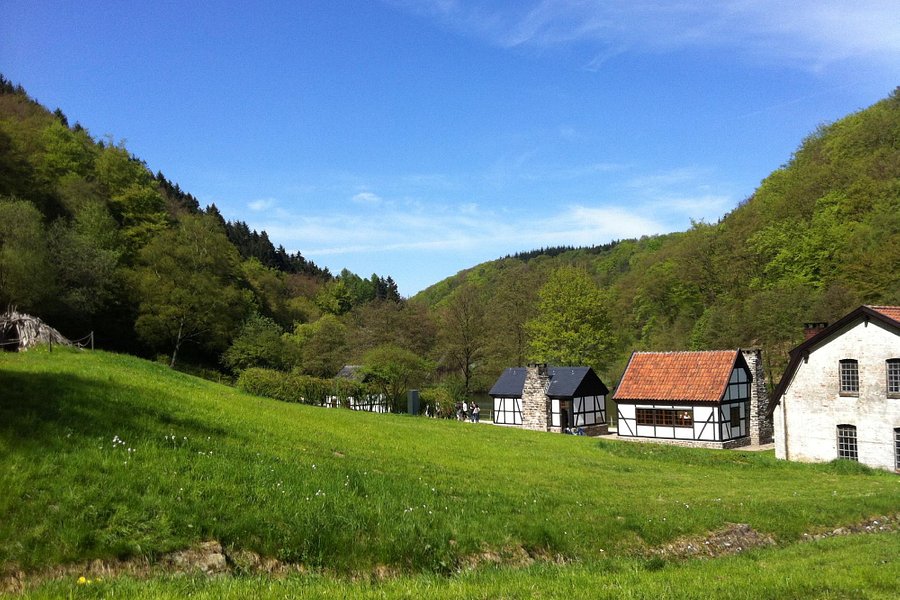LWL - Freilichtmuseum, North Rhine-Westphalia, Germany
4.5 (165 reviews) Monday: Spent Ranking #1 in Hagen Speciality Museums

Superb outdoor museum about industrial age life
Great outdoor museum, especially for kids, as there's lots to see and do. Explains all about the mining and craftsmanship surrounding metalworking in the area, and other aspects of live during the industrial age, such as village life. Kids kan make things, hammer on anvils and play with water, all the ingredients for a great day out!
Address
Mackingerbach, 58091 Hagen, North Rhine-Westphalia Germany
Mobile
Website
http://www.lwl-freilichtmuseum-hagen.de/de/
Working hours
Monday :
Tuesday : 9:00 AM - 5:30 PM
Wednesday : 9:00 AM - 5:30 PM
Thursday : 9:00 AM - 5:30 PM
Friday : 9:00 AM - 5:30 PM
Saturday : 9:00 AM - 5:30 PM
Sunday : 9:00 AM - 6:00 PM
Current local date and time now
Monday, May 13, 2024, 4:02
User Ratings
4.5 based on (165 reviews)
Excellent
63%
Good
30%
Satisfactory
4%
Poor
2%
Terrible
1%
Reviews
-
4Douglas685 5:00 PM Aug 5, 2019
Great open air museum!
The museum is a great opportunity to live the past. You will enjoy the nature and walk between original buildings from the 19th and 20th centuries. It is also a good opportunity to learn about traditional professions and the industrial history of the Ruhr region. Three tips: 1. Most information nas explanation is in German only 2. Prepare yourself to walk from 4km to 5km. 3. I don't recommend you to go there in rainy days, because you need to walk a lot in open spaces.


-
4Abrams 5:00 PM Sep 30, 2014
An interesting approach to the display of old buildings and associated industries.
There seem to be many of these freilichtmuseums scattered around Germany and it would be interesting to see if the approach of others towards the display of old buildings and crafts is different to the one in Hagen. Various buildings from around the immediate region have been collected and reconstruceted here, each with its associated craft/industry. There are various craft demonstrations throughout the day in different buildings. In Wales there is the Museum of Welsh life at St Fagans which has also collected and re-established old buildings from around Wales. But here the difference between Hagen and St Fagans ends. At Hagen the emphasis seems to be not on the old building but the activity which took place inside the building. At St Fagans it is the buildings themselves which are of foremost importance, and then the associated activity which is associated within each building. What you have at Hagen really is a museum which demonstrates crafts or industries from the immediate Ruhr area. Family life is missing. There is no sense that these buildings belonged to a community. Also as each building only needs one demonstrator it is impossible to gain any idea of how many people worked within each workshop, and what the true noise and bustle of manufacturing was actually like. Thus there is something 'missing' in this museum, there is a sense of sterility, the lack of noise and bustle within the workshops is depicted by the neatness of tools and implements within the workshops. For example in the clockmaker's shop each clock has the hands set at either 10 past 10, or 10 to 2 position. At St Fagans the houses are generally from rural locations representing the farming industry, but includes a chapel, school, Workingmen's institute such that these properties give a sense of a community. You don't get this in Hagen. What you get is a collection of workshops. Arranged in a small valley rising uphill may give the sense that these workshops represent a community but they don't. It's difficult to see how and where they fitted into a community. Many of these workshops would have been attached to living quarters but you don't get any sense of this, you cannot see where the workers dwelt. Thus you don't get a 'feel' for the people who lived and worked in these workshops, or the economic role of their workshop in the community or even their personal lives and value within a small village or town. That said, this is an excellent museum well worth visiting, and several hours should be set aside to do it justice and to benefit from the entrance fee of 7E. The buildings are spatially set apart such that there is plenty of room for visitors and in particular the various school parties. We walked to the top of the village and decided to eat there, but on weekdays there is only a small snack available in the brewery, the Gasthof only opens for meals at weekends. Toilets are scattered throughout the museum such that one doesn't have to walk back to the entrance to find one. All in all a good day out. I am glad we visited here and saw the approach which this freilichtmuseum has taken in displaying old buildings and industries but I am interested now to see other freilichtmuseums in Germany and see their approach for presentation of buildings and industry.